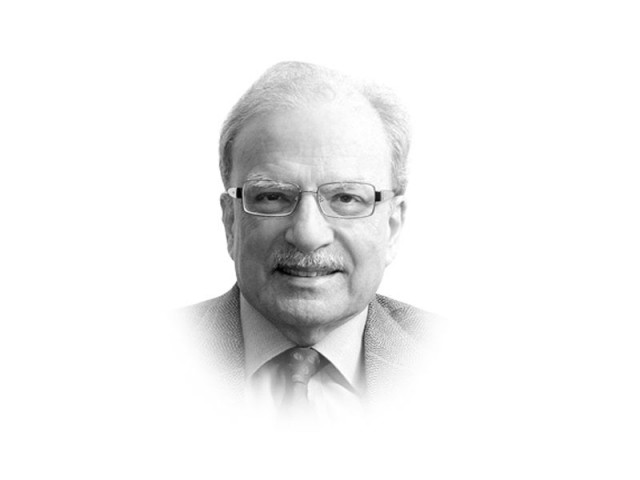Sindh’s missed opportunities
Sindh needs to move forward and use coal resource in a responsible way.

The writer is a former caretaker finance minister and served as vice-president at the World Bank
While the Karachi port has been developed well, it is the city’s location on the map of international air routes that has not been exploited. This is another case of a missed opportunity. When long-distance air travel became commercially viable, Karachi turned into an important stopping point for several airlines operating out of Europe and the US. It lost that advantage to cities such as Dubai and Doha that were nowhere on the map when Karachi was already an important airport to call on for several Western companies. Now, Karachi is just one of the many links the Middle Eastern airports have developed with near and distant destinations. It was the adoption of wrong public policies that lost Karachi this comparative advantage. But this was not the only missed opportunity.
I will discuss two more. One of these had to do with the Pakistan International Airlines (PIA) whose advertisements once use to boast that they were “great people to fly with”. In the 1970s, the airline earned a reputation for efficiency and good service. It was engaged by what are now some of the 21st century’s more developed Asian and Middle Eastern airlines to get them started. The PIA now has deteriorated to the point that in 2013, its very existence as a separate entity is threatened. It now has the highest ratio of employees per plane, the result of having been used — along with several other state-owned enterprises — as the employer of first resort for the political workers of the parties in power. The Pakistan Steel Mills at Karachi is one other public enterprise that has suffered the same fate as PIA’s.
The Partition of British India and its human consequences produced for Karachi another endowment. The exchange of population between India and Pakistan in the few months around that time brought millions of well-educated Muslims from the urban areas of British India. For more than a decade, these migrants provided the human resource base for the development of the state in Pakistan. That changed with the decision by president Ayub Khan to move the country’s capital to Islamabad. But another type of human resource continued to lend support to Karachi’s sharp development as the financial and commercial centre of the country. During the presidency of Ayub Khan, the Karachi-based banking sector developed rapidly. Several private sector commercial banks developed links with the Middle East and Britain. This process would have continued had it not been interrupted by the ill-conceived nationalisation of banking and insurance by the administration headed by prime minister Zulfikar Ali Bhutto. It was during the Bhutto period that the Middle East went through its first economic boom. Had the banking industry remained with the private sector, it would have enlarged its Middle Eastern operations with Karachi becoming an important regional financial hub for the region. Instead, the financial industry moved in the other direction with the young Middle Eastern banking industry developing a base in Pakistan by acquiring some of the assets that were to be privatised in the 1990s at bargain-basement prices.
Karachi’s mixed ethnicity offers the greatest challenge for the development of Pakistan’s largest city. It can only make the contribution its location and human resource endowment can make to the country’s economic advance if the structure of city politics is developed in a way that it provides the means to settle inter-ethnic disputes. Karachi will remain a troubled and violent city for as long as a new and inclusive political order does not get developed. It will also remain a magnet for the people that will undoubtedly be displaced by the struggle in the tribal areas following the winding down of the American involvement in Afghanistan. This new influx of migrants to the city needs to be anticipated with a view to their economic and political absorption.
Published in The Express Tribune, January 14th, 2013.












COMMENTS
Comments are moderated and generally will be posted if they are on-topic and not abusive.
For more information, please see our Comments FAQ